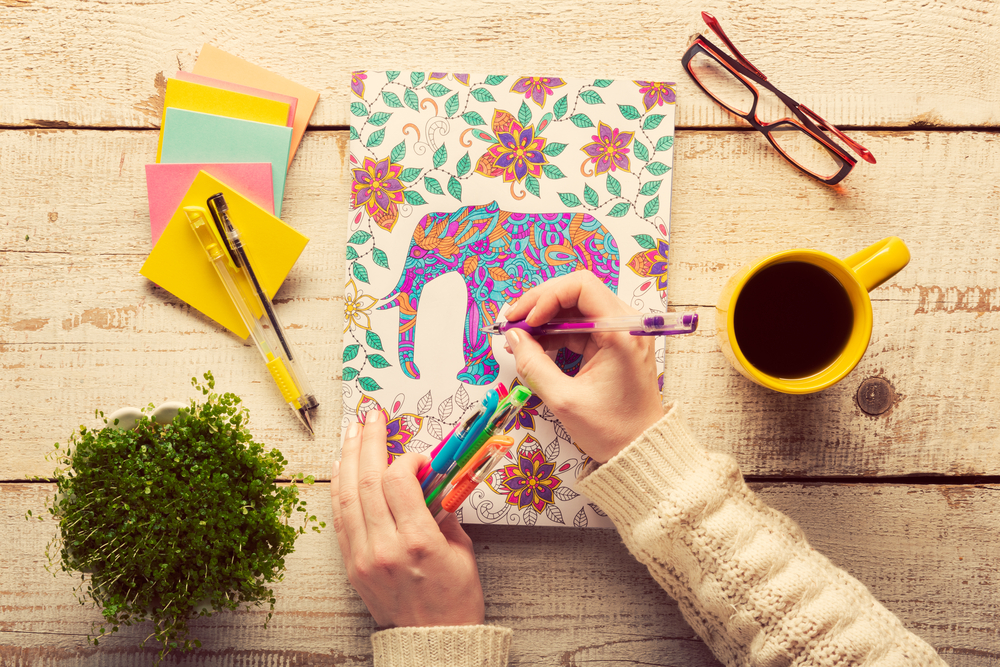Get inspired by late summer’s cacophony of colour, culture-filled festivals and inspiring events, and unleash creativity to future-proof your brain
By Rebecca Speechley
When did you last pick up a paintbrush, write a poem or play a musical instrument? For many of us it may have been a while, but it’s well worth getting inspired, because according to science, tapping into your creative side could help protect your brainpower for life.
‘Being creative helps to alleviate stress, boost your mood and broaden your social life,’ says Dr Tony Lloyd, psychologist and advisor to health research company Equazen. ‘What’s more, it could help improve your cognitive function by developing key brain networks too.’
We used to think the left-hand side of the brain was the logical side, dealing with tasks that were mathematical and scientific, while all the arty, creative stuff was left to the right side. ‘But now we’re discovering that creativity is actually a whole brain activity,’ says wellbeing consultant and creativity expert Karuna Wiese.
‘When you’re creative, trying something new or thinking of solutions to everyday problems, new neuropathways are created in your brain. This is an example of neuroplasticity, which is your brain’s ability to change throughout your life. Essentially, creativity helps to keep your brain flexible and adaptable.’
The creative brain
‘Creative people are better at engaging brain systems that typically don’t work together,’ says Dr Lloyd. There is no one creative centre of your brain – after mapping brain activity scientists have found that doing something creative such as drawing a picture, throwing a pot, or playing an instrument gets your brain firing in lots of different areas, building new connections.
The more connections there are between the different areas of your brain, the more resilient it is, and that resilience is important when it comes to keeping your brain sharp and avoiding age-related memory problems according to a study featured in Frontiers of Psychology. It is also linked to having better blood flow to your brain, which helps it defend itself against illness.
- Learn the secrets behind your motivation
Use your senses to prompt creativity
So many of your senses and parts of your body – your eyes, ears, fingers and so on – are involved in creative tasks, and your brain thrives on this flexibility.
‘Take playing a musical instrument for example,’ says Dr Lloyd. ‘The motor systems in your brain control the muscular and skeletal movements required to produce the right notes from the instrument. Your auditory circuit has to process the sound. Sensory information is sent from your fingers, hands and arms for processing.
‘If you’re reading music that visual information is sent to your brain too, to command what your body does next. And of course, your brain processes emotional responses to the music as well, triggering memories of people, places and events. All of this uses multiple brain centres, stimulating connections between cells and creating new neural pathways.’
The more often you’re creative the more often you’re firing up all these different areas of your brain. But if painting and poetry aren’t your thing don’t worry, there are some things that you probably do in your everyday life that your brain actually interprets as being quite creative due to the multi-sensory elements, so it fires up your neurons in similar ways.
To build on this, why not try walking or driving a new route to work, drawing your shopping list instead of writing it out, or taking the time to arrange some fresh flowers in a vase?
‘If you want to get more creativity in your life you need to shake up your routine,’ says Karuna. ‘If you rely too much upon routine, your brain becomes hardwired to that experience and you’re on lockdown. Try something different or a new way of doing something you’ve always done. Creative people are willing and open to new possibilities and experiences – and that in turn helps to keep you young.’
10 ways to be creative
- Gardening: Planning what to plant, feeling the soil in your hands and appreciating the fruits of your labour – gardening is great for both creativity and brainpower with one study showing that daily gardening could reduce your dementia risk by 36 per cent. Give it a try: Colouring is an easy way to get creative, so we’ve left some of our images black and white to get you started – no need for a fancy colouring book!
- Cooking: Get inventive in the kitchen, experimenting with new tastes and techniques, challenging yourself to try new things. A report published by The Lancet Psychiatry discussed how creating healthy, balanced meals from scratch at home has been shown to reduce stress and promote positive emotions, both of which are good for your brain.
- Dancing: Synch up some steps and move with the music to get your brain firing on all cylinders. Dancing combines creativity with physical exercise and could reduce cognitive decline by 75 per cent if you do it every day, say Stanford University researchers.
- Crosswords: It might seem like logic, but solving clues takes creativity and lateral thinking too, which keeps your brain flexible. People who do a crossword puzzle on four days a week have a 47 per cent lower risk of dementia than those who do one once a week, according to studies from the University of Exeter and Kings College London.
- Learning a language: Bonjour, kalimera, hola – if you’re off on holiday pick up a phrase book and learn a little of the local language. Knowing a second language could postpone the onset of memory problems by four-and-a-half years and keep your brain working like a 30-year-old’s, according to research by the University of Kentucky.
- Knitting: You’ll gain more than a new jumper if you take up knitting – studies from Knit for Peace show that people who knit have a lower chance of developing memory loss and mild cognitive decline than those who don’t.
- Singing: Whether it’s belting out your favourite songs in the car or singing in a choir or with a group of friends, carrying a tune could significantly improve your cognitive function according to the University of Virginia, US.
- Juggling: Brush up on your circus skills and try a bit a juggling – this pursuit needs full concentration and is a great way to block out the stresses of daily life. Plus it helps to build up your grey matter in parts of your brain associated with visual motor functions, says a report from Germany’s University of Regensberg.
- Photography: Learning to take good quality photographs is a ‘high challenge’ creative activity for your brain, which could help to improve your memory and cognitive function according to a study from the University of Texas.
- Art: Painting pictures, drawing landscapes or even drawing your shopping list instead of writing it down could help to protect your memory. In fact, an arty hobby could reduce your risk of developing memory problems by 73 per cent says a study by the Mayo Clinic.
- Try a meditation for letting go
- How changing the way you BREATHE could change your whole life!









